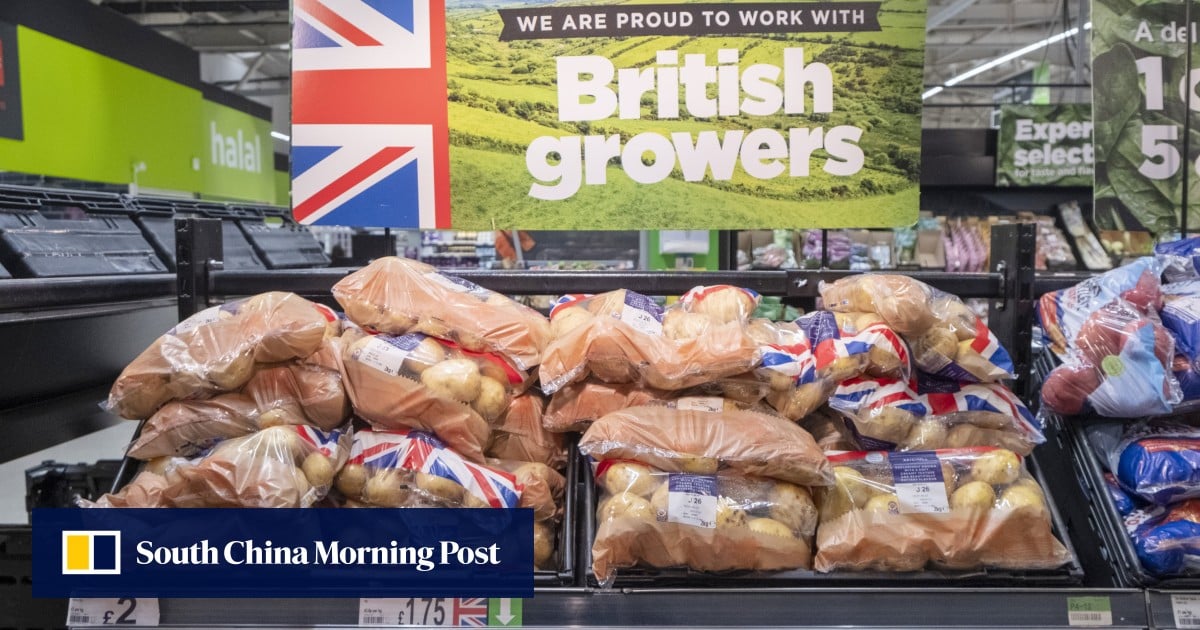In 2023, the word to describe much of the spike in food prices would have been “heatflation”, as drought and high temperatures affected crop yields around the world, from olive oil in Spain to cabbage in South Korea.
This year we are facing a different concept, still undeniably linked to the climate crisis. Let’s call it “sogflation”. If heatflation refers to price increases as a result of excessively high temperatures, sogflation is borne out of extreme precipitation.
A report published in April, by the European Union’s Copernicus climate monitoring service and the World Meteorological Organisation (WMO), showed that in 2023, while Europe experienced the highest number of days with extreme heat stress, it was also one of the wettest periods on record for many places. The continent received 7 per cent more precipitation than the 1991-2020 average, with 1.6 million people affected by flooding.
It does not take a horticulturalist to understand that waterlogged fields are not conducive to a productive harvest or plentiful seed-planting.
Potatoes are at the forefront of sogflation. With just one planting and one harvest per year, the conditions have to be just right. But in autumn 2023, poor weather forced harvesting to stop in Europe after just three weeks, as sodden soil meant farmers could not get crops out of the ground.
North-Western Europe Potato Growers, a market exchange platform for the potato supply chain, estimates that 650,000 metric tons did not make it to market in that region – with many spuds succumbing to rot in anaerobic conditions – and has warned about a 20 per cent decrease in seed availability for 2024.
What farmers were able to retrieve was compromised in quality, meaning they could not be stored as long. Sellers rushed to move that limited stock, and prices are now rising as packers and processors are competing over it.
Potato shortages for the continent look like a real risk, a problem for one of our staple foods. Europeans eat among the highest quantity of potatoes per capita of any region in the world – about 90kg (198lb) on average a year. Meanwhile, planting of the new crop may be delayed thanks to waterlogged soil and rain, suggesting that sogflation will bite all year.

English white potato prices are up 81 per cent year-over-year, an all-time high, according to Mintec, a commodity price data company. Market players expect further price increases before the new crop arrives in 2024.
In Europe, the Netherlands and Belgium – two key regions that grow processing potatoes for fries – were the worst affected, with Dutch processing potato prices at their highest level recorded for April, at €370 (US$398) per metric ton.
Grains have also been affected. After a poor winter planting season, growers are struggling to get on their fields for spring sowing. A survey by the UK-based AHDB (Agriculture and Horticulture Development Board) shows cropped areas of wheat, oilseed rape and winter barley in the UK are down significantly – pushing up local prices and leaving the nation more reliant on imports. French wheat planting has been significantly delayed, too.
It is not just vegetables and grains affected by the wet weather. Livestock farmers have seen high mortality rates in lambs, while dairy cows in affected areas are unable to be turned out on grass – reducing milk yields and raising production costs.

Food production has always been at the mercy of the elements. But given our global food network, we are in a much better place to weather the weather. We can, for example, count ourselves blessed that we were not Londoners in 1258, when a third of residents died in a famine. A major cause? An immense volcanic eruption in Indonesia caused global temperatures to dip, leading to crop failures thousands of miles away.
But while that was a freak one-time event, we are causing our current woes with our fossil fuel emissions, leading to pervasive extreme weather. Harry Campbell, a commodity market analyst at Mintec, says that as consecutive years of bad weather stack up, it is increasingly hard to recover from a poor season, while in some locations, farmers lurch from dealing with drought to flooding.
Facing a lot of risk and uncertainty, commodity purchasers are contracting more – agreeing on a price and amount in advance of the harvest – to reduce their exposure to volatile price swings, as well as increasing the numbers of growers or countries they’re sourcing from, Campbell says.
Supply chains will need to be more flexible, and ultimately more complex, to keep food supplies secure at a time when one supplier could be facing floods and another a serious drought.
Farmers in the meantime are left with the short straw, fighting poor weather to try and fulfil their contracts – some of which will not be met – while facing other rising costs and pressures.
As sogflation pushes up potato prices further, we may have to rethink the phrase “as cheap as chips”.
